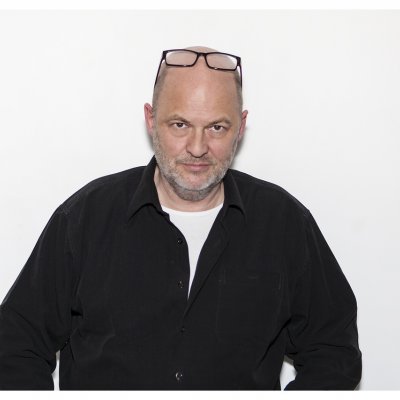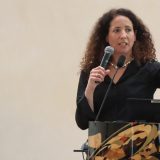Rethinking Cultural Centres in a European Dimension How can we apply the project in SoCal?
March 21, 2018
 Rethinking Cultural Centres in a European Dimension (RECcORD) is a research and action project about citizen participation in European cultural centres. Last week, Wilkinson College of Arts, Humanities and Social Sciences hosted Søren Søeborg, Head of Development at European Network of Cultural Centres (ENCC) in Denmark, in a round table discussion with Creative Culture Industries (CCI) professionals, at Chapman University in Beckman Hall, where he presented possible collaboration ideas and network building possibilities with RECcORD and Wilkinson’s CCI initiative.
Rethinking Cultural Centres in a European Dimension (RECcORD) is a research and action project about citizen participation in European cultural centres. Last week, Wilkinson College of Arts, Humanities and Social Sciences hosted Søren Søeborg, Head of Development at European Network of Cultural Centres (ENCC) in Denmark, in a round table discussion with Creative Culture Industries (CCI) professionals, at Chapman University in Beckman Hall, where he presented possible collaboration ideas and network building possibilities with RECcORD and Wilkinson’s CCI initiative.
“I have this idea that someone in the US or LA could have an organization like this (ENCC),” said Søeborg. “It’s all about participation,” he said.
And according to a video he shared with the group, participation is key.
“Our aim of the project was therefore to understand the different kinds of participation that take place in cultural centers and what the effects of these kinds of participation are, for the individual, for the cultural centres, the community and for the European cultural coherence,” said Camilla Møhring Reestorff, Aarhus University, researcher in association with RECcORD featured in the video shared during his presentation.
“We identified four different types of culture centers,” said Reestorff. “The first one is the one man or actually more often one woman center, which is based on one key person. It is often very flexible but also economically vulnerable. The second cultural center is the artist or activist group. It is often very flexible and often also based on non-paid work. And it is often centered around a strong artistic focus. The third type of cultural center is the community – or neighborhood center is more accurate. The neighborhood center is larger and it is often focused on developing social projects in the local environment and the neighborhood, often collaborating closely with the municipality or state. The fourth type is cultural center as an urban hub which is supported by the city or municipality and it’s often very focused on creating a lively urban environment – and fostering art and culture,” she said.
According to Søeborg, it’s important to distinguish between these cultural centers because it impacts the kind of participation that occurs. Depending on the centers, participation can involve attending, education, co-inhabitation, co-creation, meetings and co-decision (such as, democratic shared decision-making).
After Søeborg’s presentation, the round table discussion saw the group discussing regional cultural centers, their impact and possible future collaborations in Southern California.
Although the discussion began out with questions and concerns on how this type of project might differ in Southern California, compared to Europe, most were optimistic and excited to see how a collaboration, such as this one, could work.
“I think it is important to recognize that even though this is a European based model, the template of the model could fit with any regional/international networking,” said Wilkinson College Dean Patrick Fuery. “This has potential across the arts, humanities and social sciences right here in Southern California.”

